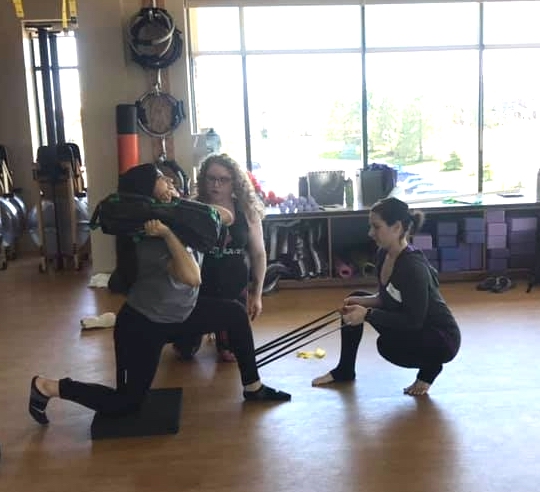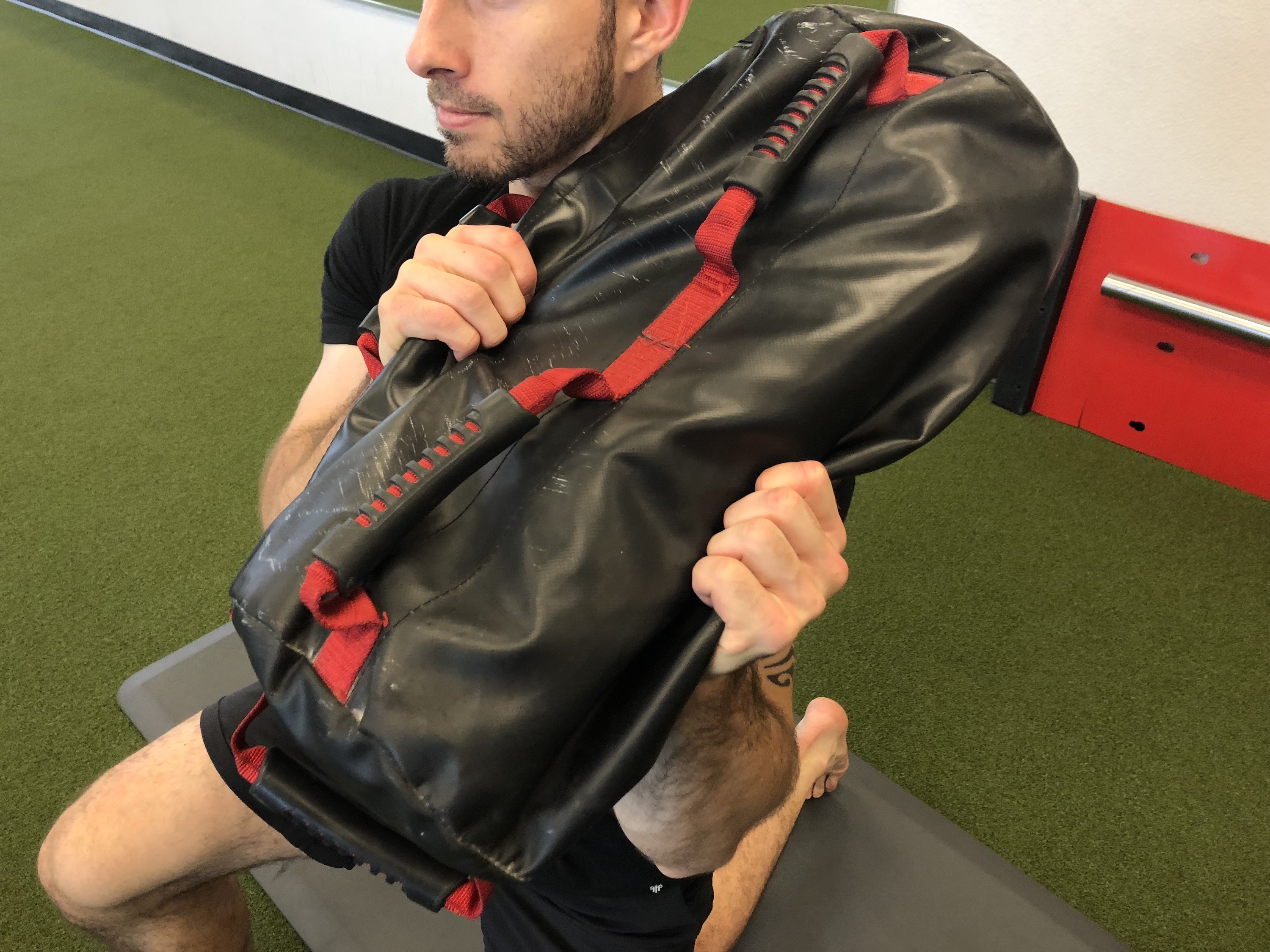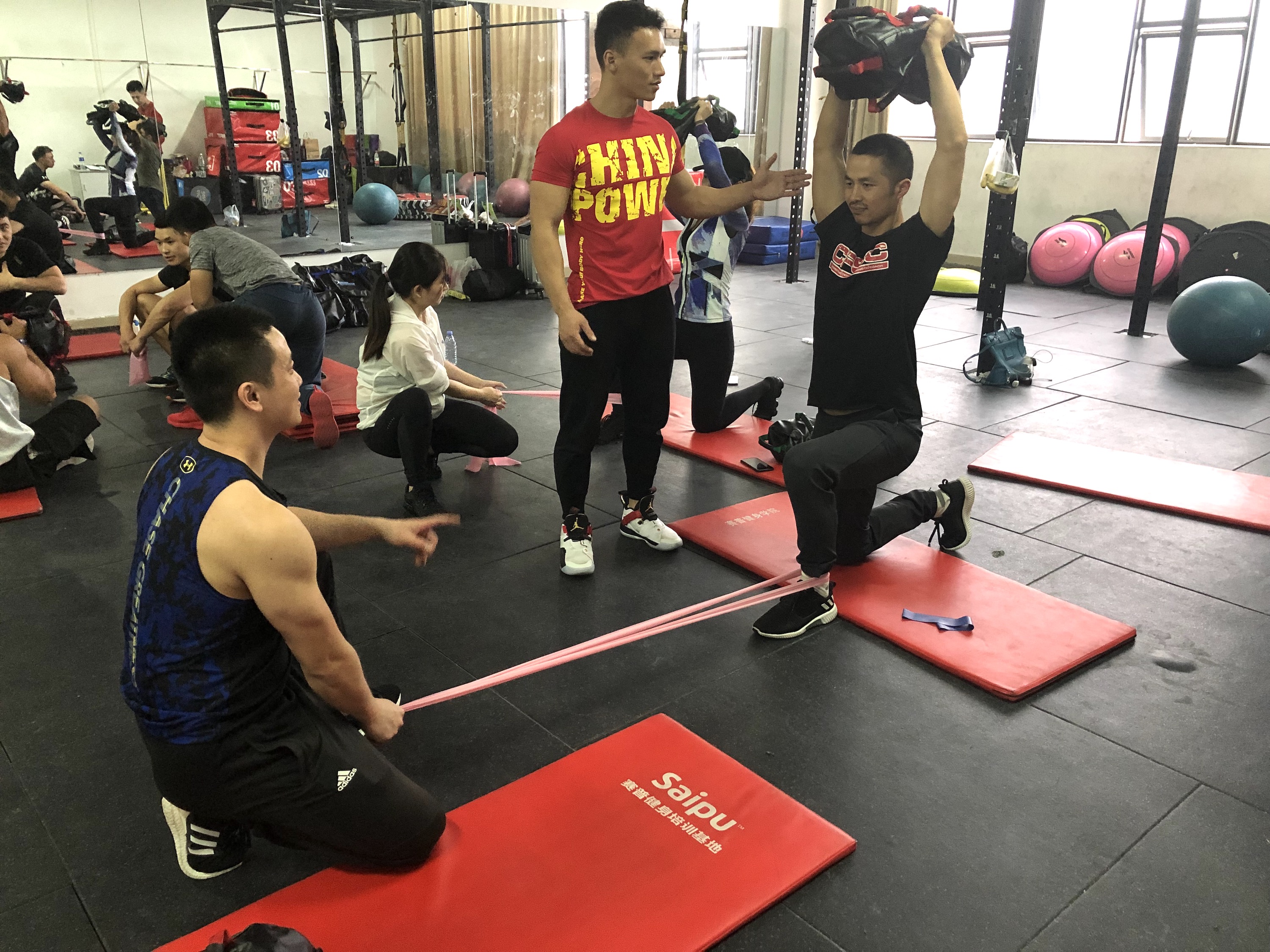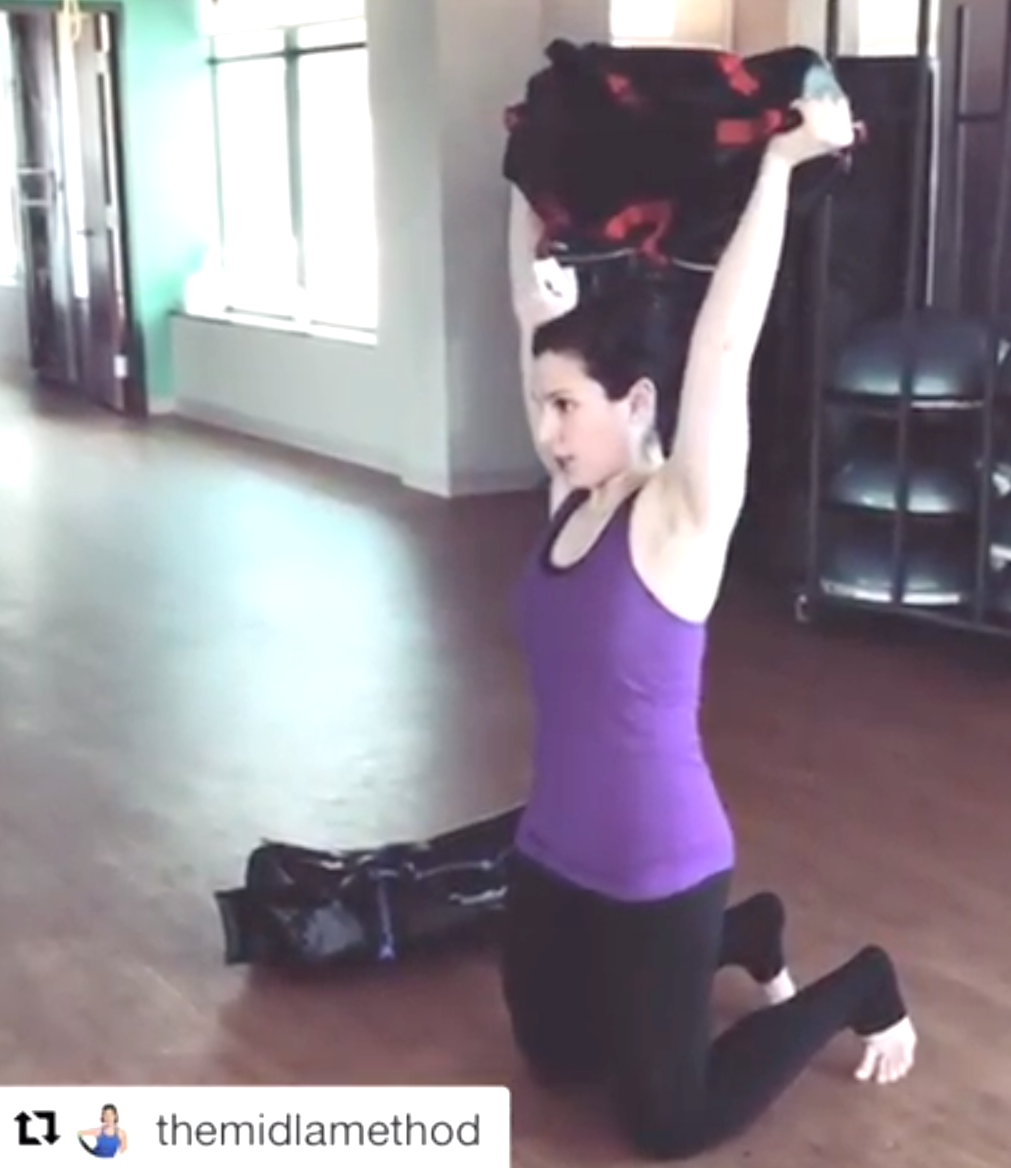The Best Ultimate Sandbag Exercise You Don’t Use!
2019-05-3
I recently instructed a DVRT workshop in Chicago and it never gets old seeing the eyes of fitness professionals get wider as they discover for themselves how using the Ultimate Sandbag with intent can instantaneously change the meaning of some of the most basic exercises.
For example, one of the DVRT Big 6 exercises, the arc press in a half kneeling position. At first glance, most would not understand what this is all about. They just see the USB moving side to side and can’t appreciate the strength and stability it requires to keep the body quiet as this is happening.
https://www.instagram.com/p/BuHTmJphypJ/
However, once they experience how the hands and feet play such a vital role in making this most basic DVRT drill a serious core strengthening exercise, then they begin drinking the DVRT Kool-Aid and become believers.
Now you might be asking, ‘C’mon Cory, hands and feet can make an arc press a core exercise? Isn’t this only a pressing thing with the shoulders?’ You see, there is a direct correlation to how your hands and feet are used for your shoulders health through correct utilization of the core. Weird, right? I didn’t quite think it made sense either, but…
I decided to apply this information on my own training floor, beginning with the arc press (since it is commonly used at FLD and one of the DVRT Big 6 exercises). And the response was overwhelming! Clients with shoulders-this and knees-that and back stuff were telling me how the reorientation of the hands and feet took pressure off of these joints and put it right where it belongs – in the core! And as a disclaimer, when I say “core,” I’m referring to the lats and glutes … and everything between!

I have found that most struggle to use heavy USBs in the arc press simply because they fail to make good use of their hands. Many just try to hold the Ultimate Sandbag, when we are looking to own it!
What you want to do is find the center of your Ultimate Sandbag and grab hold with some serious intent and that’s still not enough! After grabbing onto your USB, the overlooked step is to pull it apart with your Kung-Fu death grip! Pulling it apart is the necessary step to ensure this DVRT beauty does not become a muscling, shoulder exercise, but a total body, core-centered experience. Keeping the USB pulled tight gives the freedom for the lats to be the primary upper body movers, and if you remember my disclaimer from above – the lats are part of the core.

As soon as the shoulders rise, the lats are lost and the core is not living up to its full potential and that cannot be good for anybody or any situation! I like to use the image of a plastic bottle containing some type of carbonated beverage. The integrity of the bottle is solid with the cap sealed on. However, as soon as the cap (shoulders) rise, then the integrity of the bottle (core) is less than it once was. So keep your caps on! Grip and rip that USB apart!
I will admit most people feel that they’re pushing into the ground with their feet … until they actually press into the ground with their feet – WHAT? I did this at the workshop and I am always doing it at FLD: placing a resistance band around the ankle. I had our workshop participants do their arc presses with all the intent they could muster up, and then we did it with some band love. And, oh boy, was there a difference in their faces as they performed the same arc press with additional feedback.

What happened? Well, one foot makes up 26/206 bones in your body which means if I do my math correctly – roughly 25% of all your bones are in your feet (SPOILER: over 25% are in both hands – more than half of your bones are in your hands and feet), this should mean something!
The foot is meant to be stable and it can only be stable when it is grabbing onto the floor and pushing into it. Once this stability occurs, there is a chain of events running throughout the rest of the body where stable body parts stay stable and mobile body parts become mobile. If the feet don’t set the stage first then body parts that need to be mobile are asked to be stable and stable body parts have to be mobile. It’s a whole mess of a problem and winds up meaning your shoulder joints end up with the responsibility of stabilizing the load during arc presses with shrugged shoulders – EW.
But when the feet do their job, then other body parts do theirs and it translates that the lats and shoulder blade (rotator cuff) muscles are in charge of stabilizing the USB so the shoulder joints have the freedom to be mobile as they ought!
Using the resistance band as feedback promotes better foot engagement with the ground, giving the lifter an opportunity to be stronger with this DVRT drill.
And sometimes the best “corrective exercise” for shoulder mobility/health issues is to actually instruct someone how to press correctly. Again, seen at the same workshop in Chicago. After going through the arc presses and knowing how to better press overhead using the core muscles and not the arms & shoulders, one attendee was able to press overhead pain free for the first time in years!

She had told me how she was never able to press both arms overhead together without pain in one shoulder. So when the time was right, where we were going over pressing movements in the workshop, I had her use a 10 pound core USB, holding onto the outside handles, and press. The first repetition there was a wince of pain in her face – so we did some re-focusing and had her repeat. Of course, there was a wince again and when I questioned it, she mentioned how she was wincing in anticipation of a shoulder pain … that never happened!
And before the end of the workshop she was excitedly pressing a 30 pound power USB overhead in a tall kneeling position with absolutely NO PAIN! And why again? Because learning how to use the hands & feet will save the shoulders and create much needed tension through the core muscles. End of story.
Check out Cory’s great DVRT Movement Strength Training Programs HERE
https://www.instagram.com/tv/Bw7TEmFhJ4K/
© 2026 Ultimate Sandbag Training. Site by Jennifer Web Design.






